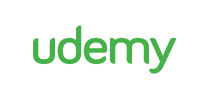در حال حاضر محصولی در سبد خرید شما وجود ندارد.

4-in-1 Bundle covering the 4 essential topics for a data scientist - SQL, Tableau, Machine & Deep Learning using Python
در این روش نیاز به افزودن محصول به سبد خرید و تکمیل اطلاعات نیست و شما پس از وارد کردن ایمیل خود و طی کردن مراحل پرداخت لینک های دریافت محصولات را در ایمیل خود دریافت خواهید کرد.


Marketing Analytics: Pricing Strategies and Price Analytics

Ace the Tableau Desktop Specialist Exam: Prep Guide & Tests

Google Looker Masterclass: Looker & LookML A-Z 2024

Mastering Business Requirements Documentation (BRD)
![[3-in-1] Data Viz Bundle: Tableau, Excel & Looker Studio](https://farinmedia.ir/farinmedia-img/https://farinmedia.ir/farinmedia-img/images-123/14000.jpgmain-resized.jpg)
[3-in-1] Data Viz Bundle: Tableau, Excel & Looker Studio

Machine Learning with TensorFlow on Google Cloud

Machine Learning with TensorFlow on Google Cloud

Microsoft Excel – MS Excel Formulas & Functions in just 3hrs

Mastering ChatGPT: Complete Guide to ChatGPT applications

Quantization for GenAI Models
✨ تا ۷۰% تخفیف با شارژ کیف پول 🎁
مشاهده پلن ها